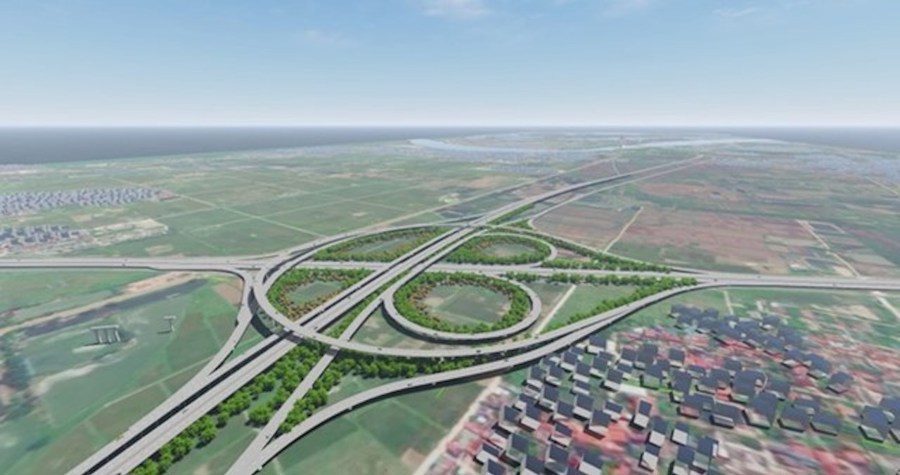
The Ring Road No.5 - Capital Region will pass through eight provinces and cities with a total investment of over VND 85 trillion (US$3.6 billion), and construction is expected to kick off before 2030.
| The design of a Ring Road in Hanoi. |
According to the Government’s plan, Ring Road No. 5 will have a length of approximately 330 kilometers, accommodating 4-6 lanes of expressway. The roadbed will be at least 22-33 meters wide, with service roads on both sides.
The project has an estimated investment of around VND85 trillion ($3.6 billion), to commence before 2030.
The route will cross the administrative boundaries of 8 provinces and cities: Hanoi (48 km), Hoa Binh (35.4 km), Ha Nam (35.3 km), Thai Binh (28.5 km), Hai Duong (52.7 km), Bac Giang (51.3 km), Thai Nguyen (28.9 km), and Vinh Phuc (51.5 km).
Recently, the People's Committee of Bac Giang province sent a letter to the Prime Minister, requesting central government funding for the construction of the Ring Road No. 5 section passing through Bac Giang and Thai Nguyen provinces, with a target completion date of 2030.
Bac Giang also requested the Ministry of Transport to approve the design scale of the Ring Road No. 5 section from the Hanoi - Lang Son Expressway to the Hanoi - Thai Nguyen Expressway. Additionally, Bac Giang has sought approval to plan and construct a 3-kilometer-long service road adjacent to Ring Road No. 5 within its territory, bordering Thai Nguyen province.
In response, Deputy Prime Minister Tran Hong Ha instructed the Ministry of Planning and Investment and the Ministry of Transport to guide Bac Giang Province by September 1, 2024, on the construction of the Ring Road No. 5 - Capital Region.
Previously, in response to a proposal from the Ha Nam People's Committee regarding the investment in Ring Road No. 5, the Ministry of Transport stated that according to the national road network plan for 2021-2030, with a vision to 2050, the section of Ring Road No. 5 passing through Ha Nam is nearly 36 kilometers long and is planned to be a 6-lane expressway, with construction expected before 2030.
The Ministry of Transport explained that the medium-term public investment plan for the 2021-2025 period is allocated mainly to critical and urgent expressway projects and addressing bottlenecks in five key transportation sectors, leaving no funds available to invest in the Ring Road No. 5, including the section through Ha Nam, during this period.
Going forward, the Ministry of Transport will work closely with the Ha Nam People's Committee to mobilize funding and explore investment options to complete the ring road in the province as soon as resources allow.
Hanoi has seven ring roads, with Ring Road 5 currently in the planning stages. Among the five existing ring roads (Ring Roads 1, 2, 2.5, 3, 3.5, and 4), only Ring Road 3 has been completed, while the others are either under construction or awaiting project approval. According to experts, once Hanoi's ring roads are fully developed and connected, they will transform distant areas with low economic activity into new industrial, commercial, and urban centers. This will accelerate urbanization, restructure the local economy, and generate resources for further development investment.
Ring roads encircle the major corridors of large cities, providing extensive connectivity that impacts surrounding areas and neighboring regions, contributing to the creation of regional economic development networks for each country. |




